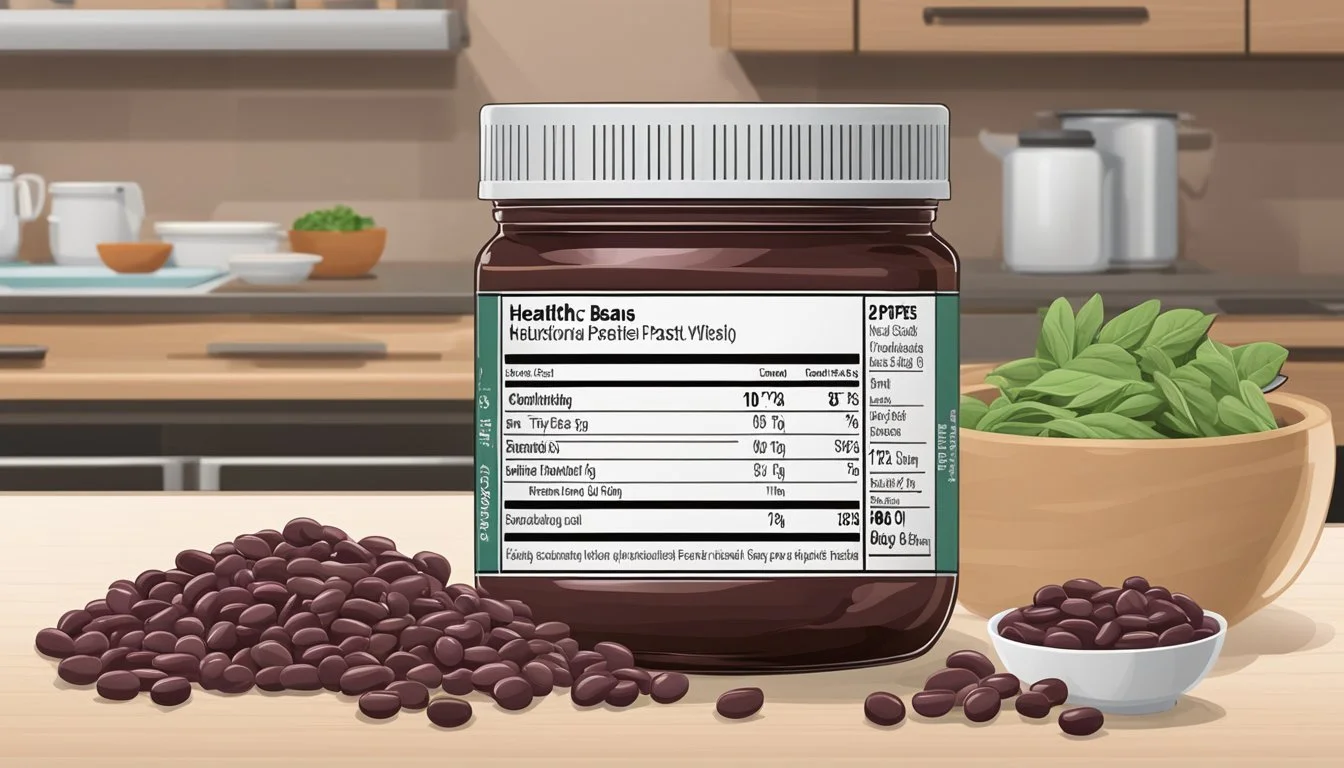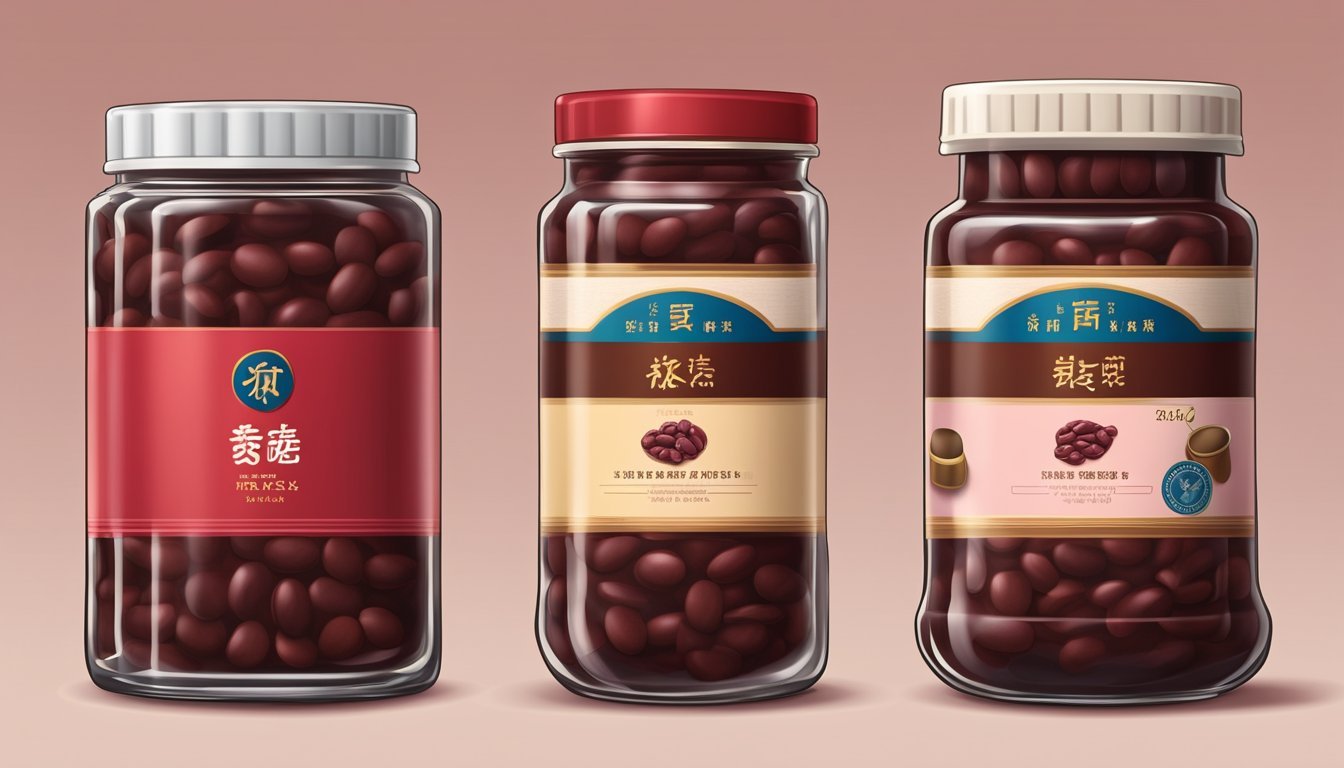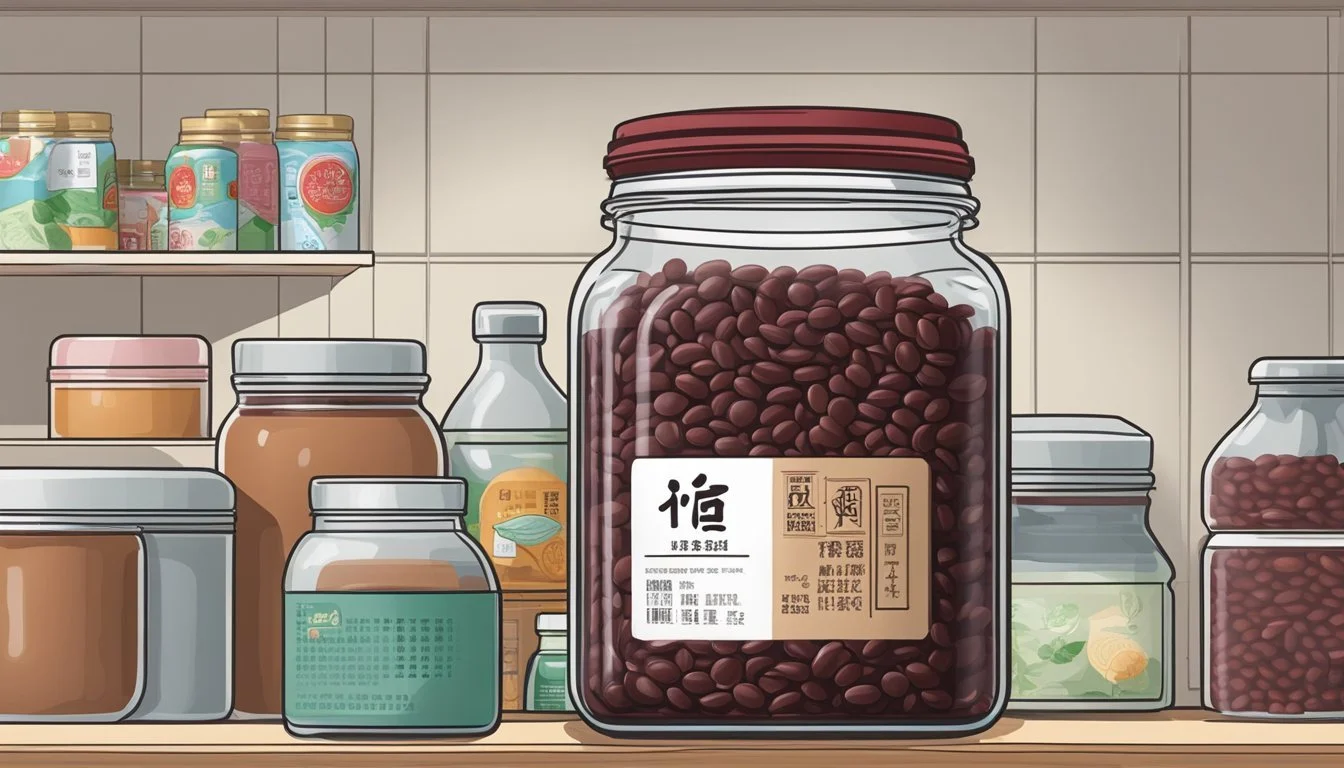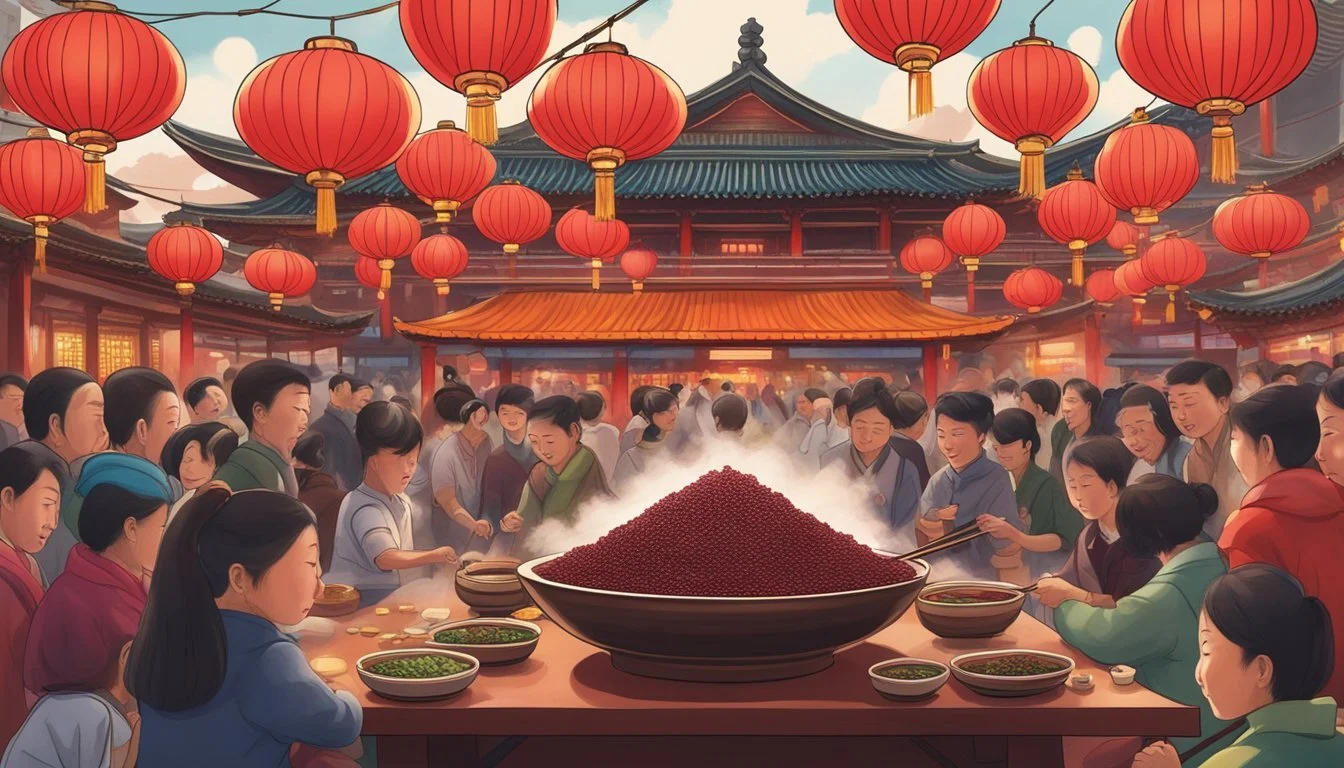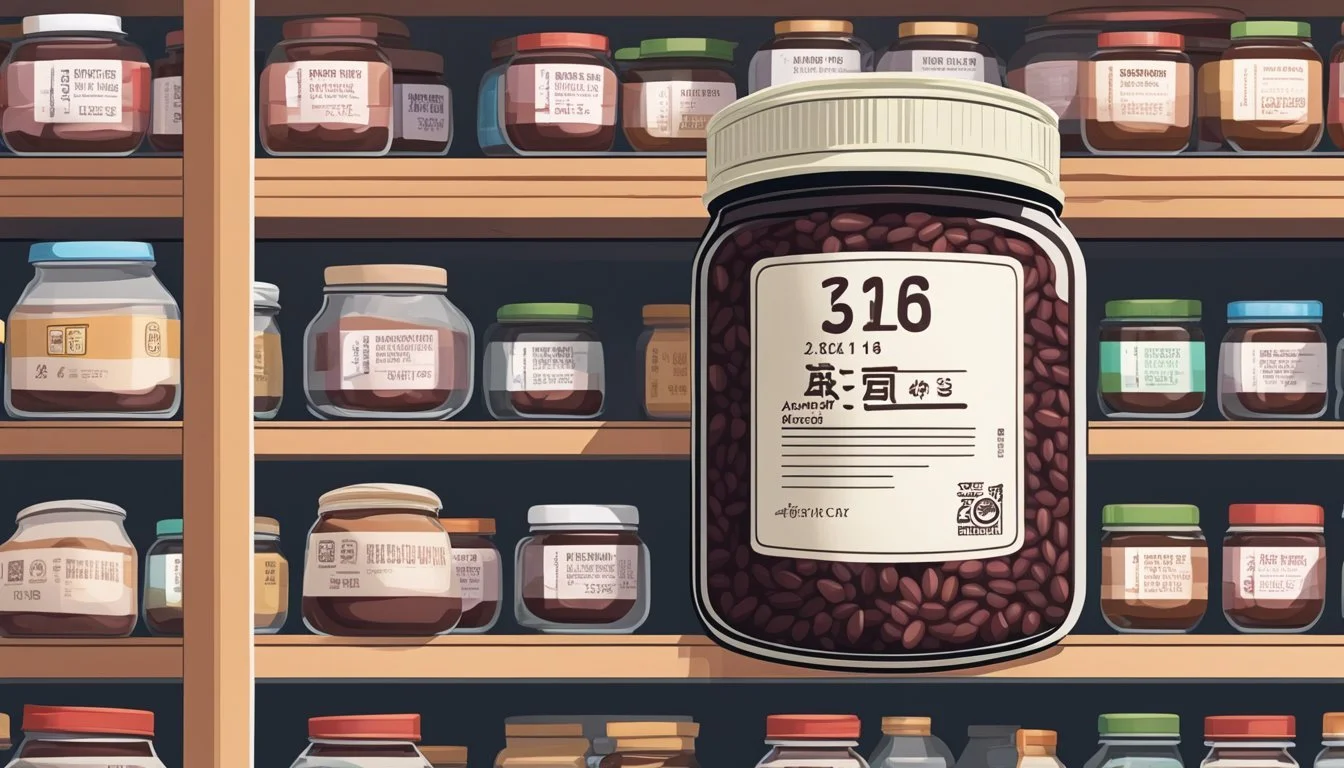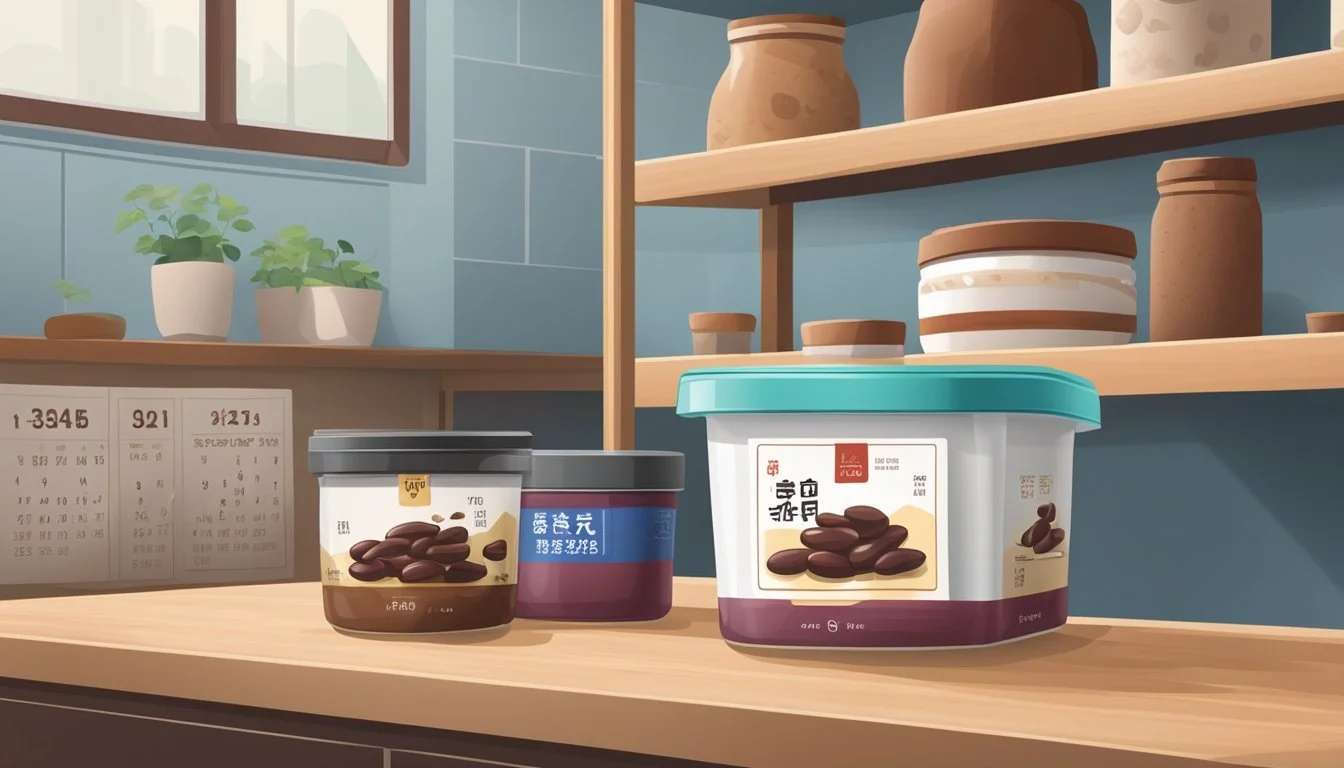How Long Does Red Bean Paste Last?
Shelf Life and Storage Tips
Red bean paste, a staple ingredient in many Asian desserts, has a shelf life that depends on its state: whether it's fermented or regular, homemade or store-bought. Typically, unopened fermented red bean paste can last from six months to a year when stored properly. This variation in shelf life can be attributed to the presence of preservatives and the conditions under which the paste is stored.
Once opened or homemade, red bean paste's longevity decreases. It should be kept in an airtight container in the refrigerator to maintain its quality. Optimal storage involves reducing the amount of air in the container to minimize exposure and potential spoilage. Under these conditions, red bean paste can last for a few weeks.
The shelf life can also be influenced by the ingredients and cooking methods. For instance, the amount of sugar and how the beans are treated during the paste-making process might extend or reduce its longevity. Taste and texture are important indicators of spoilage, meaning if the taste alters significantly or mold appears, the paste should be discarded.
Origins and Varieties of Red Bean Paste
Red bean paste is a staple in East Asian cuisine with its roots deeply embedded in Chinese, Japanese, and Korean culinary traditions. It is primarily made from azuki or adzuki beans, which are boiled, sweetened, and then mashed or left partially whole to form different textures of the paste.
In Japan, the paste is commonly referred to as anko, and it takes on various forms:
Koshian (Koshi-an): A smooth and fine paste with the bean skins removed; favored for its velvety texture.
Tsubuan (Tsubu-an): A chunky and textured paste that contains whole beans or partially crushed beans, providing a more robust experience.
Another variety, although not made from azuki beans, is shiroan, a white bean paste that is similarly utilized in many confections.
The process of making these pastes is similar, involving simmering the beans and then sweetening them. The final paste is used in a wide array of traditional desserts, such as mooncakes, dorayaki, and taiyaki. In its various forms, red bean paste caters to different palates and regional preferences, providing a sweet or subtly sweet complement to many East Asian confections.
Here's a quick reference to the common varieties of red bean paste:
Japanese Term Type Description Anko General Term Refers to red bean paste, typically assumed to be azuki-based. Koshi-an Smooth Paste A fine, smooth red bean paste with no bean skins. Tsubu-an Chunky Paste A chunkier paste with whole or crushed beans included. Shiroan White Bean Paste A paste made from white beans, offered as an alternative to anko.
Through a combination of tradition and adaptation, these bean pastes have become an integral part of many cultures’ dessert offerings, illustrating a regional appreciation for the natural sweetness and texture of the beans.
Nutritional Profile and Health Benefits
Red bean paste, derived from adzuki beans, is a staple in many Asian desserts and confections. Not only does it bring a unique sweetness to dishes, but it also offers a notable nutritional profile. The paste contains protein, which is crucial for muscle repair and building. Each serving of red bean paste delivers a moderate amount of protein essential for various bodily functions.
In terms of fat content, red bean paste is low in fat, making it a healthier alternative to many other sugary spreads. It typically contains small amounts of both saturated and unsaturated fats, which are important for maintaining healthy cholesterol levels.
The fiber content in red bean paste is particularly impressive. Fiber aids in digestion, helps with the maintenance of blood sugar levels, and contributes to heart health. The high fiber content also makes red bean paste filling and satisfying, despite its inherent sweetness. This characteristic sweetness comes from the natural sugars found in adzuki beans, which are often further enhanced by added sweeteners during the paste-making process.
Red bean paste boasts various beneficial plant compounds and essential nutrients. Here's a snapshot of its nutritional benefits:
Calories: Moderate, providing energy for daily activities.
Protein: Supports muscle and tissue health.
Fat: Low-fat content with a balance of saturated and unsaturated fats.
Fiber: Contributes to digestive and heart health.
In summary, red bean paste is more than just a sweet treat; it is a source of valuable nutrients, making it a wholesome addition to various diets.
Preparation and Cooking Methods
In the preparation of red bean paste, the methods chosen directly influence both prep and cook time, yielding results that vary in texture and flavor.
Traditional Preparation Techniques
Traditional preparation of red bean (anko) starts with adzuki beans, which are first rinsed and then soaked in water, typically overnight, to soften their structure. This soaking reduces the actual cook time on the stovetop. The beans are then simmered until tender which can take a couple of hours. A mesh strainer is often used to achieve a smooth consistency by removing the husks, following the initial cooking. The paste is sweetened with sugar before being reduced to the desired thickness. This process is known for its labor-intensive nature, taking several hours from start to finish.
Prep Time: Varies; soaking generally overnight
Cook Time: Approximately 2 hours on the stovetop
Servings: Dependent on the quantity of beans used
Using Kitchen Appliances
To expedite the preparation of red bean paste, kitchen appliances such as a pressure cooker or an Instant Pot can be employed. They significantly shorten the prep time by eliminating the need for pre-soaking and reducing the cook time through high pressure cooking. The pressure cooker anko technique involves cooking the rinsed beans on high pressure for around 20-30 minutes. After this, the sweetening and reduction steps can be the same as the traditional method, although some cooks may choose to use the 'Sauté' function on the Instant Pot to both sweeten and thicken the paste in one step.
Prep Time: Minimal; no soaking required
Cook Time: 20-30 minutes under high pressure
Servings: Adjustable; dependent on the capacity of the cooker
In both instances, the finished red bean paste can be used as filling in various confections such as dough-based sweets or as a component in other culinary creations.
Storing Red Bean Paste
Proper storage of red bean paste significantly extends its shelf life and maintains its taste. An airtight container is crucial to minimize exposure to air, the primary factor that impacts its quality over time.
Refrigeration Tips
When refrigerating red bean paste, one should utilize an airtight container to prevent the paste from absorbing odors and drying out. It is vital to leave as little air as possible in the container to slow down the oxidation process. Red bean paste can typically last for a few weeks when stored properly in the refrigerator.
Minimize headspace: Press down the paste to expel excess air before sealing.
Use clear storage: Opting for clear containers can help visually ensure the paste is free from mold.
Freezing and Thawing Procedures
For long-term storage, red bean paste can be frozen. To freeze, one should place the paste in a freezer bag or an airtight container, again pressing out as much air as possible before sealing. Label the bags with the date of freezing.
Freezing:
Flatten the paste in the bag to thin it out. This allows for more uniform freezing and easier thawing.
Freeze up to three months for optimal taste.
Thawing:
Thaw in the refrigerator overnight.
Avoid microwave thawing as it can unevenly heat and alter the texture of the paste.
Alternative Storage Options
Aside from refrigeration and freezing, there are other methods to store red bean paste which can impact its shelf life. If one plans to use the paste shortly after making it, it may be kept at room temperature for a short period, typically a day, covered with a damp towel to prevent crusting. However, for longer shelf life, refrigeration or freezing is recommended.
Room temperature (short term): Keep covered in a cool, dark place.
Store in dark, dry conditions to avoid light and moisture, which can spoil the paste quickly.
Usage in Recipes and Sweets
Red bean paste, or anko, is a foundational ingredient in a myriad of sweets ranging from traditional wagashi to contemporary desserts and innovative culinary delicacies.
Traditional Japanese Sweets
Anko serves as the soulful center in traditional Japanese wagashi. In mochi, a sweet rice cake, it often appears as daifuku, where the paste cuddles with strawberries to form strawberry mochi or with floral essence to create sakura mochi. Dorayaki relies on anko as a filling sandwiched between two sponge-like pancakes, while taiyaki, a fish-shaped cake, also cherishes this sweetened adzuki bean heart. Manju, steamed buns, and dango, skewered rice dumplings, frequently feature anko, demonstrating its versatility. The smooth or chunky paste also enriches broths in delicacies such as zenzai or oshiruko, warm and comforting red bean soups.
Daifuku: Glutinous rice cake stuffed with anko and often with a whole strawberry.
Sakura Mochi: Pink-colored mochi filled with anko, associated with cherry blossom season.
Dorayaki: Two small pancake-like patties enveloping a scoop of anko.
Modern Desserts and Pastries
Moving beyond traditional uses, anko adapts wonderfully into modern desserts and pastries. Variations of red bean ice cream are becoming increasingly popular, as are red bean mooncakes, a twist on the conventional lotus seed paste mooncakes. It can be integrated into mochi cakes for a dense, chewy texture, or serve as a flavor base for Western-inspired creations, such as red bean paste-filled doughnuts. Bakeries may also offer buns such as anpan, a soft bread with anko filling, fusing traditional flavors with contemporary convenience.
Red Bean Ice Cream: A smooth dessert infused with the rich taste of red bean paste.
Red Bean Mooncake: A variant of the traditional mooncake, substituted with red bean paste.
Alternative Culinary Uses
Anko isn't confined to sweets alone and can be found in alternative culinary uses. Innovative chefs and home cooks may craft homemade anko using a balanced red bean paste recipe to ensure the perfect consistency and sweetness. This allows them to explore unconventional applications such as anko spreads on toast, incorporated into fillings for sandwiches, or even as a base for savory-sweet sauces.
Homemade Anko: A do-it-yourself version of the paste, allowing full control over texture and sweetness levels.
Extending Shelf Life and Quality
Preserving the freshness and quality of red bean paste hinges on the choice of ingredients for preservation and the optimization of storage conditions.
Ingredients to Prolong Freshness
Sugar acts as a natural preservative for red bean paste, with various types such as caster sugar, dark brown sugar, and rock sugar not only imparting sweetness but also lending to the product's longevity. Sweet red bean paste often contains higher sugar content, which can help in preservation. Adding fat, for instance, a small amount of oil, can create a barrier against air and bacteria, thus extending the shelf life. Employing fresh ingredients from the start also ensures a longer-lasting product.
Sugar: A higher sugar content equates to better preservation.
Fat: A thin layer can protect against contaminants.
Freshness: Starting with fresh beans and other components is crucial.
Optimizing Storage Conditions
To maintain the quality of red bean paste, store it in an airtight container to prevent the exposure to air. Keeping the paste in a cool, dry place, preferably at a consistent temperature, can deter the growth of mold and bacteria. For long-term storage, refrigeration is recommended, with the understanding that cold can thicken the paste; it's advisable to bring it to room temperature before use. For those seeking to extend its shelf life further, freezing red bean paste is also a viable method.
Airtight Containers: Limit oxygen exposure to prevent spoilage.
Cool and Dry: Consistent, moderate conditions favor preservation.
Refrigeration vs. Freezing:
Refrigerating thickens the paste but maintains quality for weeks.
Freezing extends shelf life but requires thawing before use.
Cultural Significance and Popularity
Red bean paste, known in Japanese as anko and in Mandarin as 豆沙 (dou sha), holds a significant place in East Asian culinary traditions. In Japanese cuisine, this sweetened paste crafts the essence of many traditional desserts and is an indispensable component of wagashi—a category that includes a variety of Japanese confections. Examples of wagashi featuring red bean paste are daifuku, a chewy mochi exterior with a sweet anko center, and anpan, a soft bread bun filled with red bean goodness.
The use of red bean paste spans across various Asian countries, each bringing its own cultural touch to this versatile ingredient. In Cantonese cuisine, it's often found in mooncakes and sweet buns, evidencing its adoption into local desserts.
Aspect Significance in East Asia In Japanese Sweets Integral to many traditional Japanese sweets. In Traditional Japanese Sweets A primary ingredient in wagashi. In Japanese Cooking Used across a wide spectrum of Japanese desserts. In Cantonese Cuisine Found in mooncakes and pastries, symbolizing regional adaptation. In Asian Pastries Universally acknowledged as a classic filling.
Red bean paste also carries cultural importance, frequently associated with festive occasions and celebrations, signaling its role beyond mere taste—embedding tradition and heritage in Asian pastries. As such, it remains a beloved staple, unified in its variations across different Asian cuisines.
It's imperative to note that the popularity of red bean paste sustains as new generations continue to cherish and integrate it into both traditional and innovative dessert forms. Their consistent inclusion in family meals and festivities further cements the cultural relevance of anko in daily life and culminating events.
DIY Red Bean Paste at Home
Creating red bean paste at home is a rewarding process that allows for control over sweetness and texture. The homemade variety, known as anko, can be used in a multitude of traditional Asian desserts.
Homemade Recipe Guidelines
To make anko, one begins with azuki beans, which are small, reddish-brown legumes known for their sweetness. The basic process involves:
Soaking: Azuki beans need to be soaked in water for at least 8 hours or overnight, which aids in softening them for cooking.
Cooking: After soaking, the beans are drained and then simmered until they are completely tender. Subsequent steps might include:
Draining: The beans are then drained of their cooking water. Some may reserve this liquid for adjusting the paste's consistency later.
Sweetening: The tender beans are sweetened with sugar. The sugar amount can vary; usually, 1½ cups of sugar are adequate for making a sweet red bean paste.
Mashing or Puréeing: For tsubuan (chunky paste), the beans are only partially mashed, leaving some beans intact. For koshian (smooth paste), the beans are passed through a sieve to achieve a fine purée.
Cooling and Resting: The paste should be allowed to cool and thicken, this also allows flavors to meld.
Red bean paste can be used immediately once it has cooled, or it can be stored in the refrigerator for use in various recipes, such as fillings for red bean buns or dough for sweets.
Customization for Taste and Texture
Making homemade anko gives one the liberty to customize as per personal preferences:
Sweetness: Adjust the sugar to taste. Some might opt for less than the typical amount for a less sweet version.
Texture: For a richer texture, a small amount of butter or vegetable oil can be incorporated into the paste.
Variations: Although traditional anko is made with azuki beans, variations like shiroan (white bean paste) can be made by substituting with lima beans or other white beans.
Cookware: Using a non-stick pan can make the process easier and prevent sticking.
Using fine flour or other thickening agents is not standard for anko. However, individuals can experiment with their anko recipes to suit the desired application, whether it be for baking or as a standalone dessert component.
Health and Safety Considerations
When considering health and safety aspects of red bean paste, one must be aware of allergen information and the best practices for storage and consumption safety. These factors are crucial to ensure the paste is enjoyed without health risks.
Allergen Information
Red bean paste is primarily made from adzuki beans and may contain additional ingredients such as sugar and fat, which can be a concern for individuals with allergies. It is not a common allergen, but the product should be consumed with caution if someone has a history of legume allergies. When protein is a concern, it's important to note that red bean paste is plant-based and contains a significant amount of protein from the adzuki beans.
Storage and Consumption Safety
For safe consumption, red bean paste should be stored properly. An airtight container is essential to preventing the growth of bacteria and maintaining freshness. The paste can last for several weeks when refrigerated. It is recommended to:
Store the paste in the fridge immediately after use.
Minimize air exposure by leaving little headroom in the container.
When preparing red beans, one must ensure proper cooking to eliminate potential toxins. Boiling the beans for at least 10 minutes is recommended as a safety measure before they're transformed into a paste. This process should destroy any toxins and allow for safe consumption of the final product.
Red bean paste's fat content varies depending on the preparation method. If additional fat is used, it should be of high quality and stored correctly to avoid rancidity, which could compromise the safety of the product.
Purchase and Selection Tips
When selecting red bean paste, buyers should consider both quality and storage options to maintain the integrity of this versatile sweet filling. The key to longevity is how one stores the paste after purchase.
Quality Check: They should look for a smooth, glossy appearance, and the paste should have a consistent texture without any discoloration. If available, tasting a sample can also indicate freshness.
Container Type: Red bean paste typically comes in cans or vacuum-sealed packs. If purchasing from a store, it’s recommended that buyers ensure the packaging is intact with no signs of damage or leakage.
Airtight Storage: Upon opening or if purchased in bulk, they must transfer the paste to an airtight container. This minimizes the contact with air, which is crucial to prevent spoilage and maintain its flavor.
Storage Conditions: They should store this airtight container in the refrigerator, away from strong-smelling foods, as red bean paste can absorb odors.
Expiry Date: Checking the expiry date before buying ensures that one selects the freshest product, giving it a longer shelf life once they bring it home.
By adhering to these tips, consumers can ensure that their red bean paste remains a delicious and high-quality ingredient for their culinary creations.
Frequent Questions and Misconceptions
In this section, answers to common queries about the shelf life and storage of red bean paste are clarified to dispel widespread misconceptions.
Common Queries
How long does red bean paste last?
Storage in the fridge: Red bean paste (also known as anko) made from azuki beans generally lasts for several weeks when stored in the refrigerator in an airtight container.
Can red bean paste be stored at room temperature?
Storage in the storeroom: Red bean paste must not be kept at room temperature as it is prone to spoilage.
Does freezing extend the shelf life of red bean paste?
Freezing red bean paste: Yes, freezing can significantly extend its shelf life, allowing it to last for months.
Is there a difference in storage between sweet and salty red bean paste?
Type Variance: Both sweet red bean paste and salty red bean paste should be stored under the same refrigerated conditions for optimal longevity.
Clearing Up Confusion
"Red bean paste doesn't contain fats and therefore doesn't go bad."
Contrary to this belief, while red bean paste is low in fat, it can still spoil because it contains other perishable ingredients. Fat content does not solely determine a food's spoilage rate.
"Red bean paste used in baking or Japanese desserts lasts longer."
The shelf life of red bean paste is consistent, regardless of its use in baking, mooncakes, dorayaki, or other Japanese desserts like zenzai, koshian, or tsubuan. It should be consumed within the same time frame whether used in recipes or stored.
"Anko made with butter will last longer."
While butter may change the texture and flavor of anko, it does not extend its shelf life compared to traditional red bean paste versions.
By understanding these specifics, consumers can ensure they use their red bean paste while it remains delicious and safe to consume.



